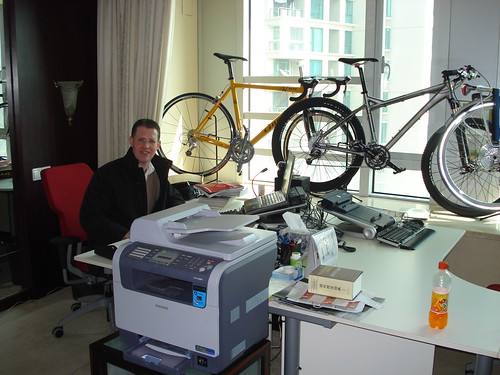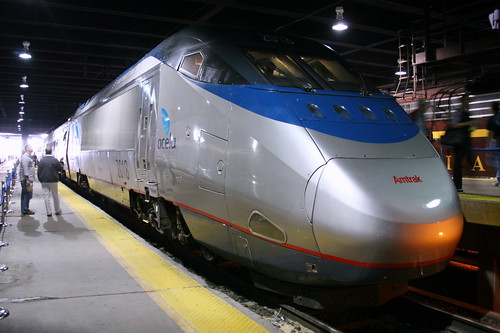Chinese Rail Investment Gathers Pace! 80 very high-speed trains (236 mph) purchased for $4 billion
(Source: Tree Hugger)
Tree Hugger reports that the estimated $4 billion US (or 2.7 billion euros) is only part of China’s grand $300B dream. Another recent article on TreeHugger outlined the grand plan to invest over $300 billion in high-speed rail through 2020, in a bid to speed ahead of the rest of the world’s train systems. Here are some excerpts from today’s interesting TreeHugger article.
The Chinese Ministry of Railways has announced that it will buy 80 “very high speed trains” from Bombardier’s Chinese joint ventre Bombardier Sifang to add to China’s fast-growing network of high-speed rail. The ZEFIRO 380 trains are both very efficient (more on that below) and very fast, and should help make transportation in China greener, especially if train trips displace plane trips.
The order is for 20 eight-car trainsets and 60 sixteen-car trainsets, for a total of 1,120 cars.
The ZEFIRO 380 has a maximum operating speed of 380 kilometers per hour (236 miles per hour) and is designed for efficiency:
The Bombardier press release notes ” The new trainsets will be an integral part of an evolving high speed rail capability in China, which is developing more than 6,000 km of new high speed lines to create one of the most advanced high speed rail networks in the world. The trains, with maximum operating speeds of 380 kph, are based on Bombardier’s next-generation ZEFIRO high speed rail technology, and powered by a highly energy efficientBOMBARDIER MITRAC propulsion and control system.
The ZEFIRO 380 trainsets will also incorporate Bombardier’s advanced ECO4 energy saving technologies to create best-in-class energy and operating efficiencies. Bombardier launched its ECO4 technology package in 2008 as part of an ongoing focus to extend rail’s position as the most sustainable form of transportation in the world. Bombardier is first in the industry to create a new formula for total train performance with a portfolio that can create substantial overall energy savings of up to 50%.”
The ZEFIRO 380 trains will be manufactured at Bombardier Sifang (Qingdao) Transportation production facilities in Qingdao, China. Engineering will take place in Qingdao and at Bombardier centers in Europe with project management and components provided from sites in Europe and China.
What the heck is USA doing?
If you are wondering what is the status of the US high-speed rail development program, here is your answer. We are waaaaaaaay behind many of our counterparts that are already engaged in the HSR programs . The Europeans (French with their TGVs & Germans with their ICE trains) and the Japanese have been at the forefront of HSR for decades and have built excellent systems that are capable of traveling at ~250MPH speeds. New comers such as Spain and China have blazed new paths and surged ahead of the US and have embarked on ambitious plans, backed by huge government funding commitments. Heck, even the oil-rich Saudi Arabia is forging ahead with its development of brand new HSR lines cutting across the sandy deserts connecting major cities. Recently, the Russians also got on this track and have quickly sought Spain’s help in building their HSR lines. While the rest of the world is surging ahead, the US Government is still wrangling over its plans of where to invest the $8Billion funding. The US HSR Association states “Our vision is for a 21st century, 17,000 mile national high speed rail system built in 4 phases, for completion by 2030″. Realistically speaking, this goal seems far fetched at this point, especially with the glacial pace of activity at the Federal level.
Click here to read the entire article. Also, click here to see more pictures of these new toys China is buying from Bombardier.













